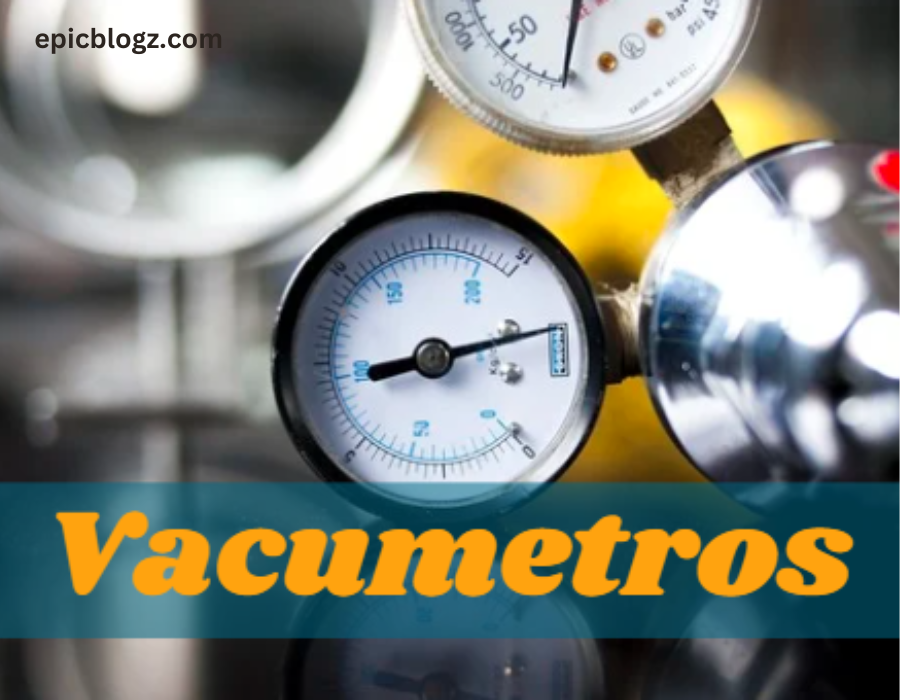Introduction: The Importance of Accurate Measurement
Accurate pressure measurement is vital in many applications. In industries ranging from pharmaceuticals to automotive manufacturing, maintaining the correct vacuum levels can influence product quality, safety, and efficiency. Vacumetros provide precise readings that help monitor and control processes effectively. However, with various options available on the market, it can be challenging to determine which vacumetro is best suited for your specific needs. This guide aims to simplify that decision-making process by breaking down the types of vacumetros, their features, and factors to consider when making a purchase.
What are Vacumetros?
Vacumetros are instruments designed to measure vacuum pressure within a system. They provide critical information about the pressure levels in environments where air or gas is removed to create a vacuum. By quantifying the vacuum level accurately, these devices help ensure that processes operate within desired parameters.
Types of Vacumetros
Vacumetros come in various types, each suited for different applications and environments. The two primary categories are analog and digital vacumetros.
1. Analog Vacumetros
Analog vacumetros utilize mechanical components to display pressure readings. They typically feature a dial gauge with a needle that indicates the pressure level. These devices are often favored for their simplicity and reliability.
Advantages:
- Easy to read and interpret.
- No need for batteries or electrical power.
- Durable and resistant to harsh conditions.
Disadvantages:
- Limited accuracy compared to digital models.
- May require manual calibration.
2. Digital Vacumetros
Digital vacumetros employ electronic sensors to measure vacuum pressure and display results on a digital screen. These devices often come with advanced features such as data logging, connectivity options, and higher accuracy.
Advantages:
- High precision and accuracy.
- User-friendly interfaces with clear digital displays.
- Additional features like data recording and remote monitoring.
Disadvantages:
- Dependence on batteries or electrical power.
- Potentially more expensive than analog models.
Other Specialized Types of Vacumetros
In addition to analog and digital vacumetros, there are specialized types designed for specific applications:
3. Capacitive Vacuometers
Capacitive vacuometers measure changes in capacitance caused by variations in pressure within a vacuum chamber. They are highly sensitive and suitable for low-pressure measurements.
4. Pirani Gauges
Pirani gauges use thermal conductivity principles to measure vacuum levels. They are effective in measuring pressures from atmospheric pressure down to ultra-high vacuum levels.
5. Ionization Gauges
Ionization gauges are used for ultra-high vacuum measurements by detecting ions created from gas molecules in a vacuum environment. They provide precise readings essential for advanced scientific research.
Key Applications of Vacumetros
Vacumetros find applications across various industries due to their ability to provide accurate pressure measurements:
1. Manufacturing
In manufacturing processes such as vacuum molding or packaging, maintaining specific vacuum levels is crucial for product quality. Vacumetros help monitor these levels to ensure optimal conditions during production.
2. Research Laboratories
Scientists use vacumetros in laboratories for experiments requiring precise control of vacuum conditions. Accurate measurements enable researchers to gather reliable data and conduct experiments effectively.
3. HVAC Systems
In heating, ventilation, and air conditioning (HVAC) systems, vacumetros help maintain proper airflow by monitoring pressure levels within ducts and equipment. This ensures efficient operation and energy savings.
4. Aerospace
In aerospace applications, controlling vacuum levels is vital for testing components under simulated conditions similar to those experienced in space. Vacumetros provide accurate readings necessary for ensuring safety and performance.
5. Food Processing
Vacuum packaging is widely used in the food industry to extend shelf life and maintain freshness. Vacumetros help monitor the vacuum levels during packaging processes to ensure product integrity.
Factors to Consider When Choosing a Vacumetro
Selecting the right vacumetro involves considering several key factors that align with your specific needs:
1. Measurement Range
Determine the range of pressures you need to measure based on your application requirements. Different vacumetros have varying measurement ranges; ensure that the chosen device can accurately measure within your required limits.
2. Accuracy Requirements
Consider how precise your measurements need to be. Digital vacumetros typically offer higher accuracy than analog models but may come at a higher cost.
3. Environmental Conditions
Evaluate the environment where the vacumetro will be used. If you’re working in harsh conditions (e.g., extreme temperatures or corrosive environments), choose a model designed to withstand those conditions.
4. Ease of Use
Look for a vacumetro with user-friendly features such as clear displays, intuitive controls, and easy calibration processes. This will enhance productivity and reduce errors during measurements.
5. Budget Constraints
Establish a budget before shopping for a vacumetro. While it’s important to invest in quality equipment, there are options available at various price points that can meet your needs without overspending.
Maintenance Tips for Vacumetros
Proper maintenance is essential for ensuring the longevity and accuracy of your vacumetro:
1. Regular Calibration
Regularly calibrate your vacumetro according to manufacturer recommendations or industry standards. Calibration ensures that your device provides accurate readings over time.
2. Cleaning Procedures
Keep the sensor and display units clean from dust or contaminants that could affect performance. Use appropriate cleaning solutions recommended by the manufacturer.
3. Inspect Connections
Check all connections regularly to ensure they are secure and free from leaks or damage that could impact measurement accuracy.
4. Store Properly
When not in use, store your vacumetro in a dry environment away from extreme temperatures or humidity that could damage electronic components.
5. Follow Manufacturer Guidelines
Always refer to the user manual provided by the manufacturer for specific maintenance recommendations tailored to your model.
Benefits of Using Vacumetros
Implementing vacumetros into your processes offers numerous advantages:
1. Enhanced Efficiency
Accurate pressure measurements lead to improved efficiency across various operations—from manufacturing processes to scientific experiments—ensuring optimal performance at all times.
2. Cost Savings
By maintaining proper vacuum levels, businesses can reduce waste and minimize errors associated with improper measurements—leading to significant cost savings over time.
3. Improved Quality Control
Vacuum measurement plays a crucial role in quality control procedures across industries; consistent monitoring helps maintain product standards while ensuring compliance with regulations.
4. Increased Safety
Accurate measurements contribute directly toward safer operational environments—particularly important when handling hazardous materials or conducting experiments under controlled conditions.
Future Trends in Vacumetro Technology
As technology continues evolving rapidly within various industries—so too does innovation surrounding vacuometry! Here are some anticipated trends:
1. Smart Vacumetros
With advancements in IoT technology integration—future smart vacumetros will enable real-time monitoring capabilities via connected devices—allowing users access remotely while automating data analysis processes!
2. Portable Solutions
Miniaturization trends will lead toward more portable designs—allowing users greater flexibility when measuring pressures across diverse environments without sacrificing accuracy!
3. Enhanced Data Analytics
Future models may incorporate advanced data analytics features—providing users insights into trends over time while improving decision-making processes based on historical performance metrics!
Conclusion
In conclusion—selecting the right vacumetro is essential for ensuring accurate pressure measurements across diverse applications! By understanding different types available along with key factors influencing selection—you’ll be better equipped when making decisions tailored specifically towards meeting operational needs!
Whether you work within manufacturing sectors or scientific research environments—the right choice can significantly enhance efficiency while promoting safety standards too! As technology continues advancing rapidly—staying informed about emerging trends will empower users further towards optimizing their processes effectively!
ALSO READ: www.hura-watch.net Business Archives: Explore the Wealth
FAQs
1. What is the typical lifespan of a vacumetro?
The lifespan of a vacumetro varies based on usage frequency and maintenance but generally ranges from several years up to ten years or more if properly cared for!
2. Can I use an analog vacumetro instead of digital?
Yes! Analog models remain popular due their simplicity; however they may lack some advanced features found in digital versions—like data logging capabilities!
3. How often should I calibrate my vacumetro?
Calibration frequency depends on usage intensity; however it’s advisable to perform calibrations every six months or annually based on manufacturer recommendations!
4.Are there any specific environmental considerations when using vacumetros?
Yes! Ensure that you select models designed specifically for harsh environments if applicable; also protect devices from extreme temperatures/humidity which could affect their performance!
5.Can I connect my digital vacumetro with other devices?
Many modern digital models offer connectivity options allowing integration with other systems—enabling enhanced functionality such as remote monitoring/data logging capabilities!







